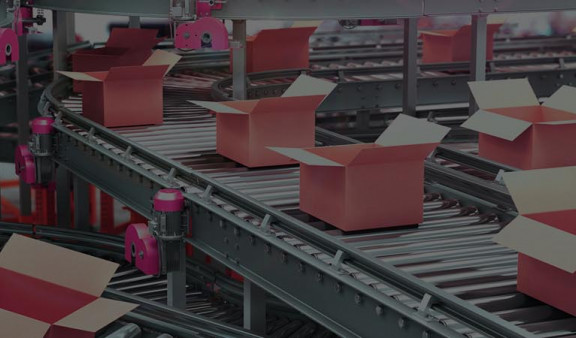
Make your E-Commerce Platform profitable
A closer look at E-commerce platforms, including both functional and non-functional features. Learn which features are key to ensure your e-commerce profitability.
INTRODUCTION
Difference between e-commerce application and e-commerce platform
The main difference between an e-commerce application and platform, is the ability of the latter to create and manage multiple sites or channels with different audiences, currencies, languages, and assortments. Additionally, a platform implies more flexibility. This includes the capability to create or change existing business rules, define new data models, or setup multiple complex pricing structures. In short: the capability to completely customize the system as desired.
E-Commerce Platform
Features of an E-Commerce Platform
Options to customize your platform are basically limitless, but let’s have a look at some of the most popular features. Spoiler alert: features are only semi-important. Non-functional requirements such as flexibility and adaptability will often be the deciding factors for success.
Control
First of all, if you’re setting up a new e-commerce platform, you want to be in control of the day to day tasks in your shop without any dependencies on IT. There is no single right or wrong way to go about this. Most platforms provide some capabilities for managing your assortment, your prices and promotions, search configurations, and usually some means to segment or personalize the customer experience. The main question is: to what extent can these properties be managed and how intuitive is the interface?
Consider these examples of common but complex requirements:
- As a merchandiser I want to manage the content of the category pages for different segments and sub-segments, without confusion about who is able to see what and when.
- As a ‘searchandizer’, I want to be able to manage the order and visibility of the search filters for each (sub)category separately, ensuring the displayed filters (or ‘facets’) are related to the loaded product type
- As a marketing manager I want to enable each country manager to manage all their own content. But whenever content is updated globally, the local manager should be informed, and able to update their own pages with the new content. This way, all countries always have relevant and up-to-date content.
As you may realize when looking at these examples, requirements don’t equal experiences. Different platforms can offer comparable functionality, but the experience of the employee that uses them can vary wildly. Never underestimate the value of a good user experience, even when working on the backend. If configuration demands excessive time and effort, there’s a fair chance a feature won’t get any use at all because the employee has other priorities that require attention.
Flexibility and adaptability
When it comes to enterprise solutions, you shouldn’t focus too much on the out-of-the-box features. It’s the ability of the e-commerce platform to adapt to your specific needs that will prove to be key. Do you work with a complex (B2B) pricing structure? Then make sure your platform is capable of importing and modelling these prices, and that they can be integrated and requested in real time. Does every customer have a different assortment? Then make sure your platform is flexible enough to establish and maintain proper relationships. And what about promotions? When flowing freely, marketing and sales teams will usually provide the most creative promotion formulas. But which of these promotion types is your e-commerce platform able to support? Think along the lines of volume discounts, bundles, and conditional giveaways, to name but a few.
Of course, the list of possible requirements goes on and on. How adaptable is the checkout process? Can it handle complex calculations or ‘missed promotions’ in the cart? And in regards to backend processes, the questions arise if you can easily change the product data model or create a workflow for enriching the product data?
Finally, in case you have specific needs that aren’t supported by the feature set of the e-commerce platform, the challenges are of a different nature. To what extent is the platform itself customizable or extensible? Are you able to change important functionality if needed? Is there a process that ensures compatibility with future releases? Of course, customizing a solution isn’t always the first choice, but sometimes there’s business value to be gained by doing so. The most important thing is ensuring you never get completely stuck due to the restrictions of your e-commerce platform.
Scalability
Becoming a victim of your own success is the last thing you want. Integrating an e-commerce platform in your organization, including all backend integrations, is no trivial task. For this reason, ensure beforehand that your system is capable of handling sustainable growth. Ask yourself this; what’s your company’s best-case scenario for the next five years? Don’t limit yourself to thinking in traffic or orders, but also take the creation of new channels such as apps, specialized sites, and POS kiosks into account. Scaling to different countries, and increasing your assortment by adding more products or completely new categories deserves your attention too. Is your e-commerce platform able to support all this?
Try to approach this challenge from different perspectives:
- Is there functionality to support these scenarios?
- Can the system support the expected data load, both outside-in (traffic and orders) and inside-out (e.g. pricing and assortment updates)
- Last but not least; do you have agreements about future license costs and upgradability?
Security and privacy
Not the most popular subjects, but extremely important just the same; your digital hygiene. Is the system robust? Where is the data stored? How much effort will it take to comply to the GDPR rules? Consider the Top Ten OWASP measures and check if your e-commerce platform is compliant. Note that good security is mostly affected by how the application is implemented, even more so than by the application’s actual attributes. Therefore, make sure you have a good relationship and agreement with your implementation partner.

Connectivity
A key attribute of a successful e-commerce platform is its proper integration in your application landscape. An e-commerce solution often has to connect and deal with many systems after all. Despite the fact that each organization has its own specific application landscape and needs, the following systems are quite common:
- ERP (Enterprise Resource Systems) for retrieving data, including prices, stock, and scheduled orders.
- Product Information Management system (PIM) for rich product data.
- A Digital eXperience Platform (DXP), the bigger brother of a Content Management Platform or CMS.
- CRM (Customer Relation Management) system, for retrieving and sending order data, and managing your communication history.
- Customer Service (CS), Customer Experience Center (CEC), and Call Center (CC) tools, to support your customers with their questions and issues.
- Warehouse Management Systems (WMS) and fulfilment partners, to send order data, and retrieve track & trace data.
- Data Management Platforms (DMP) or Customer Data Platforms (CDP), for cross-channel profiling.
- BI (Business Intelligence) or Datawarehouse, for collecting your e-commerce data and combining it with other data sources, allowing for in-depth analysis.
- Middle layers such as an Enterprise Service Bus (ESB) or Event Bus, making your architecture more robust and flexible.
Don’t forget that in addition to these backend integrations, there can also be a need for specific frontend integrations.
- Integration in other channels of your main data end-services. This includes pricing, assortments, stock, and transactions, and can be done using a POS system, an app, or a (headless) category site.
- In B2B the ability to connect to other ERPs through EDI connections is often required, or the ability to work with customers’ eprocurement systems.
These types of integrations do demand built-in support from your e-commerce solution in order to function properly, while other integrations are more frontend focused and usually don’t end up causing problems. The latter includes analytics tools, marketing tools for personalization and campaigning, intelligent cloud search and merchandizing tools, and customer feedback tools.
It’s the capability to connect with all these systems that makes the difference between an e-commerce application and solution. That’s why you should always consider your e-commerce project a platform, not just an application with nice features.
Transactions and B2B features
This is what an e-commerce solution is all about; the ability to facilitate and record every transaction. All e-commerce solutions must surely have this part covered, right? Unfortunately and unexpectedly, there’s a lot of base functionality that’s not as commonplace as it should be.
Consider the following B2B transaction features:
- Capability to regulate re-orders and replenishments.
- Capability to use an internal approval flow (on the client side)
- Credit checks in case of large orders, or customers with known limited credit.
- Capability to allocate an order to a specific cost centre.
- Capability to create bulk orders for items with multiple variants (e.g. order 500 shirts in different sizes and colours, in a single order form).
- Capability to add internal product codes or order numbers to orders.
- Use of historic orders for creating new orders, such as order lists that are specific to a time of the year (seasonal orders), or lists that allow customers to easily navigate and re-order their most ordered items from the past year.
- Configure cut-off scenarios in the cart.
- A quick-order form that can be created by entering or importing a list of product codes and quantities.
More broader applicable, especially in B2C scenario’s, are the following e-commerce platform capabilities:
- Capability to reserve stock in the cart and during checkout, and being able to configure this differently per product type.
- Capability to trigger a scarcity message in the cart (‘Only 3 items left’)
- An adaptable checkout flow (single page, multiple pages, loyalty integration)
- Capability to store payment credentials in a secure way, so customers can order in a single click.
- Capability to spot ‘missed promotions’ in the cart, such as a product that is part of a multi-buy promotion, and notify the customer about this opportunity.
To summarize the main takeaways when selecting an e-commerce solution:
- Don’t underestimate the importance of usability, although this often demands a serious investment.
- Flexibility and adaptability are more important than a fixed list of features. No matter how extensive the list, there’s always something missing, either straight from the start or later down the line.
- Scalability, integration options, and security are digital hygienic issues. They should be sufficient and usually are. However, scalability and extensibility can come with a hefty price tag. Do you know which modules, number of CPU’s, installations and channels are included in your license? Make sure that you negotiate for future success.

E-Commerce Whitepaper
The complete guide to enhance your current E-commerce solution
Increase profitability and future-proof your current e-commerce platform.
SQLI OFFERS
Reach out if you need support from an unbiased third party in your e-commerce solution selection process. SQLI has the know-how and experience to help you focus on the parts that are important for your specific business case. We can make sure you find the solution that fits your business and requirements, with the flexibility for meeting unknown future demands head on.


